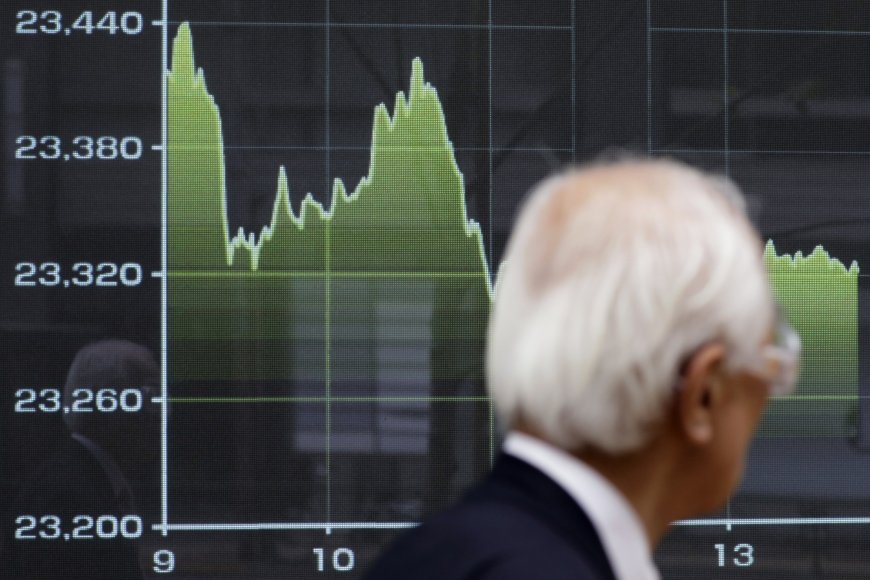Global Stocks Slide as Inflation Data Sparks Concerns, Pushes Yields Higher
Global markets witness turbulence as unexpected inflation data triggers stock declines and surging yields. Learn how the producer price index (PPI) results impact investor sentiment and shape future rate hike expectations

Global financial markets witnessed a notable downturn as stocks took a hit and U.S. Treasury yields surged in response to unexpected inflation data released on Friday. The release of the U.S. producer price index (PPI) for final demand, indicating a slight rise in prices beyond expectations, has raised concerns about the direction of interest rates. This development has prompted speculations about the Federal Reserve's stance and its potential impact on the economy.
Inflation Data Surprises Market
The U.S. Labor Department reported a 0.3% increase in the producer price index (PPI) for final demand in July, surpassing economists' predictions of 0.2%. Moreover, the year-over-year PPI rise of 0.8% exceeded expectations of a 0.7% advance. However, the data for June was revised downward, indicating that the PPI remained unchanged instead of showing a slight increase as initially reported.
Market Reaction and Analyst Insights
Following the release of the data, global stock markets faced a downward trajectory. Meanwhile, U.S. Treasury yields surged, fueled by growing expectations that the Federal Reserve might maintain higher interest rates for a prolonged period. Market experts and analysts have noted that this uptick in inflation has led investors to scrutinize the underlying factors driving it. While disinflation seemed rapid in the past months, signs suggest that this trend might be leveling out.
Paul Christopher, the head of global investment strategy at Wells Fargo Investment Institute, emphasized that investors are delving deeper into inflation dynamics. He observed that disinflation, though swift at the macro level, could be stabilizing, potentially necessitating a continued cautious approach by the Federal Reserve.
Implications on Stock Market and Yields
The impact of the inflation data was palpable on Wall Street's major indices. The Dow Jones Industrial Average saw a modest rise of 0.08% to reach 35,203.64, while the S&P 500 experienced a decline of 0.30% to settle at 4,455.21. The Nasdaq Composite, however, faced a notable drop of 0.75%, closing at 13,634.40.
Internationally, the pan-European STOXX 600 index registered a significant fall of 1.09%, and MSCI's global stock gauge reflected a decline of 0.62%. Emerging market stocks mirrored the downward trend with a drop of 1.10%. Asian stocks also followed suit, with the MSCI Asia-Pacific index outside Japan slipping by 1.13% and touching a one-month low.
Expert Insights and Currency Movement
Market sentiment was further influenced by comments from Mary Daly, President of the San Francisco Federal Reserve Bank. Daly emphasized the need for further progress to combat inflation before the Federal Reserve could consider its mission accomplished. In the currency realm, the dollar index observed a rise of 0.107%, with the euro dipping by 0.18% to $1.0959. The Japanese yen experienced a slight weakening of 0.06% against the greenback, trading at 144.81 per dollar. Sterling, however, demonstrated strength, closing at $1.2704, a 0.23% increase attributed to unexpected second-quarter GDP growth.
Yield Movement and Commodity Impact
The impact of the inflation data on U.S. Treasury yields was significant. Benchmark 10-year notes experienced a rise of 6.2 basis points, reaching 4.144% compared to 4.082% at Thursday's close. The 30-year bond also witnessed an increase of 3.2 basis points, yielding 4.2651% as opposed to 4.233% previously. The 2-year note, meanwhile, registered a rise of 6.9 basis points, yielding 4.8904% from 4.821%.
In the commodities arena, oil prices edged slightly higher due to OPEC producer group optimism about robust oil demand in 2024. U.S. crude oil experienced a 0.4% increase, reaching $83.15 per barrel. Brent crude similarly climbed to $86.74, reflecting a 0.39% rise. However, the International Energy Agency (IEA) issued a note of caution, projecting slower demand growth for oil in the upcoming year due to various factors including lackluster macroeconomic conditions, a plateauing post-pandemic recovery, and the escalating adoption of electric vehicles.
Also Read: Stock Market Reacts to Shifting Inflation Signals: Insights from Latest Market Movements

































































